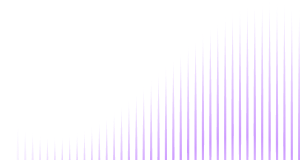Face comparison has now become a core part of identity verification, as it helps organizations match a person’s face with their portrait in ID documents or databases. It is now more commonplace than ever, which also makes it a subject of interest.
What exactly is happening during the facial comparison process? Where is it used? Is it the same as face matching? Face detection? Face recognition?
Read further to find out.
Subscribe to receive a bi-weekly blog digest from Regula
What is face comparison?
Face comparison is a one-to-one biometric check that measures how similar two facial images are and decides if they show the same human face. In identity verification, it typically compares a live selfie with the portrait extracted from a trusted record, such as an ID document or an account file. The engine turns both images into templates, computes a similarity score, and applies a threshold to return a "yes" or a "no".

Key differences between related terms
The identity verification industry is developing more and more specific ways in which a person’s face is used in the authentication process. In practice, this is spawning a vast array of terminology that is sometimes confusing, even for experts in the field.
Let’s clear up some of the most common gray areas.
Face comparison vs. face detection
Face detection is just a locator. It scans an image, finds the human face, and returns a box and landmarks, making no identity checks.
Facial comparison, on the other hand, is a decision. It takes two already-detected faces, turns them into templates, measures how close those templates are, and answers with a “yes” or a “no.” In identity verification, it's usually a live selfie compared against a facial image taken from an ID portrait.
.svg)
Face comparison vs. face matching
Face matching is a multi-layered term that can be seen in different contexts. While some use it interchangeably with face comparison (for 1:1 verification), others use it specifically for checking one probe against several document portraits or frames to find the best candidate before facial comparison. At the same time, the term “face comparison” is reserved purely for the final 1:1 decision.
This way, a product can have face matching technology and facial comparison as different parts of one flow: the former picks the best reference image among many candidates, and the latter decides “yes” or “no” on that selected pair.
Face comparison vs. face recognition
Face comparison is strictly 1:1—a person presents a selfie, the system extracts the document portrait, and the engine decides if they match. There is no gallery, no ranking, and the consent context is straightforward.
Meanwhile, facial recognition technology performs a 1:N search, where a submitted image is compared against a whole gallery of images (e.g., a watchlist) to suggest an identity, and results arrive as a ranked list. It uses related, but distinct, components such as gallery management, indexing, and a facial recognition algorithm tuned for search rather than only verification.

Some IDV vendors support both functionalities, in which case they try to keep this distinction clear. Regula, for example, reserves the term “face matching” for 1:1 checks, while using “face recognition” for 1:N searches.
How face comparison works
A typical facial comparison flow can be broken down into the following steps:
Step 1. Capture and quality control: Guidance helps the user steady the camera, look into the lens, and present a neutral facial expression. The system checks brightness, blur, pose, and head size. On the document side, it also locates and crops the portrait zone.
Step 2. Face detection: A detector finds the face and landmarks, then crops consistently. Strong face detection is important because even the best matcher suffers if key facial features are clipped.
Step 3. Liveness detection: The system verifies that a real person is present (not a printout, mask, injection or replay) with an array of active or passive liveness detection checks. Solutions like Regula Face SDK can use either or both (depending on the setup), with active methods prompting the user to perform a certain action like turning their head, and passive ones quietly analyzing the face’s texture consistency and microexpressions.
Step 4. Template creation and comparison: The system generates a template for each crop using a facial recognition algorithm. The engine measures the similarity between the templates and returns a score plus metadata for audits.
Step 5. Outcome: If the score is below the threshold because of blur, glare, or pose, the user can be prompted to recapture. If PAD (Presentation Attack Detection) or injection checks fail, the session is blocked. If scores are near the policy boundary, organizations may send the case to manual review depending on their assurance level and local rules.
Step 6. Calibration, security, and privacy: In the background, teams also track false accepts and false rejects in live traffic, and adjust thresholds by scenario. Templates at rest should be encrypted, with tight key rotation and short retention tied to a clear purpose.
Face comparison use cases
Face comparison technology has virtually become mainstream by now, finding practical use in many scenarios, including:
Banking, fintech, and crypto: Banks, neobanks and crypto exchanges rely on facial comparison during onboarding to tie a selfie to the document portrait after document checks pass. Later, the same solution supports step-up checks for device changes, payouts, and high-risk sessions. Teams often keep a stricter threshold for first payouts and a gentler one for routine sign-ins on familiar hardware.
- Travel, border control, and aviation: Self-service gates and airline kiosks commonly run a 1:1 check between a live capture and the ePassport chip portrait. Lighting and camera placement are often controlled, so accuracy stays high even with very short interactions.
Government services and digital IDs: Citizen portals and digital ID programs use facial comparison software to tie accounts to trusted records and to confirm identity during benefit claims or address changes.
Online gambling and gaming: Age gates, account funding, and withdrawals often include a selfie match; biometric facial comparison technology confirms the person who registered the account is the one cashing out.
E-commerce platforms and gig marketplaces: Seller onboarding, high-value payouts, and account recovery are common places to use biometric face comparison technology as well.
Education, proctoring, and exams: Student onboarding and exam check-in increasingly use face comparison software to link a selfie to an ID record.
Telecom and eSIM provisioning: Prepaid SIM registration, number porting, and eSIM activation benefit from facial comparison between a document portrait and a live selfie.
Workplace access and facilities: Lastly, turnstiles and kiosks can confirm identity by matching a live capture to a consented reference held in the access system. When a site also uses badges, facial comparison software acts as a step-up control at sensitive doors or during visitor check-in.
A final word on face comparison
Facial comparison is a simple, yet precise two-input decision that sits at the center of many ID verification flows across finance, telecom, travel, public services, and workplace access.
When capture is clean, liveness is solid, and matching is well-calibrated, biometric facial comparison technology provides strong protection without making the process burdensome.





